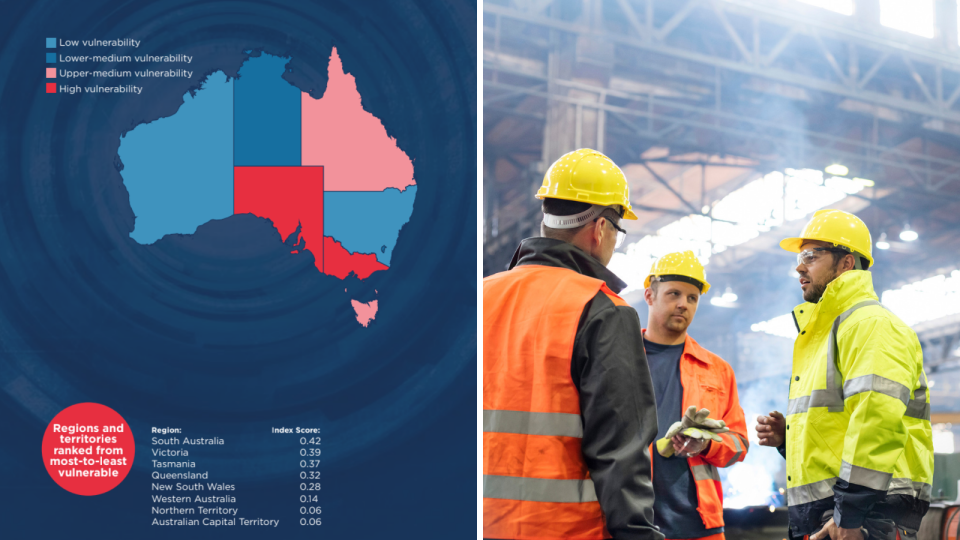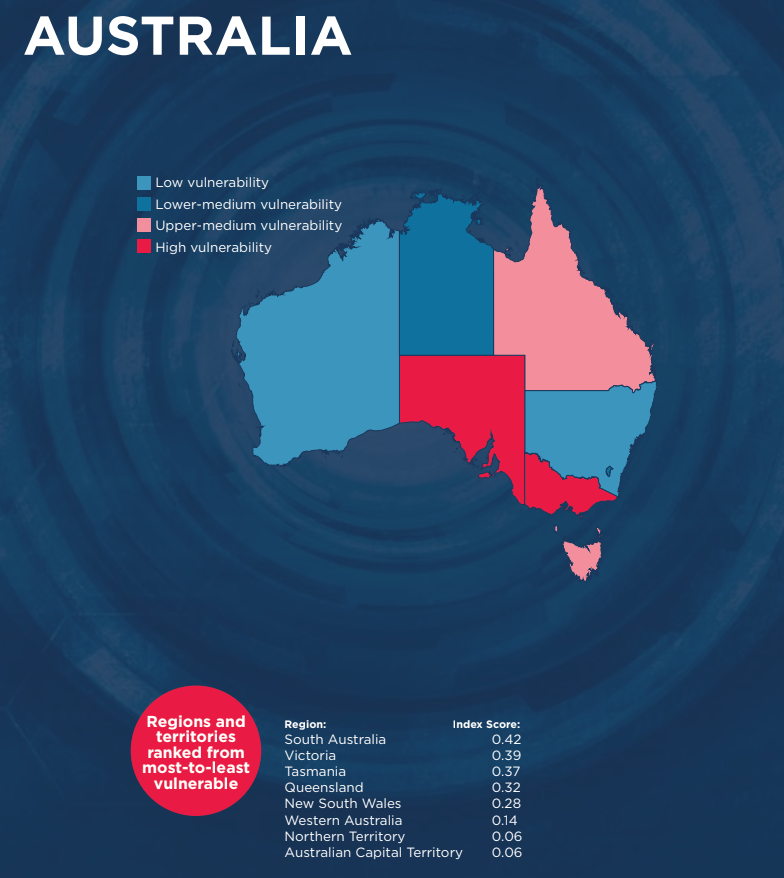Heat map: Where the robot revolution will hit Australia

It’s the question concerning more than a handful in today’s workforce: will robots be taking over our jobs?
Well, yes, and no.
Robots can never replace people when it comes to very human skills such as creativity, problem-solving and team-building, but there will be a handful of industries and jobs that will become automated.
According to a new report by Oxford Economics, 20 million manufacturing jobs will be lost to robots by 2030, with each robot to eliminate 1.6 manufacturing jobs on average.
Not only that, but we’ll see robots increasingly used in the service sector across the next five years, which will take jobs in sectors that would otherwise absorb the manufacturing workers that have been displaced by automation.
And in lower-skilled regions in particular, robots will see nearly double the number of manufacturing jobs lost, which will exacerbate social and economic stress.
Related story: The 12 skills you need to bulletproof your career
Related story: 10 skills you won’t need by 2022 — and 10 you will
Related story: Watch out: 36% of Aussie jobs will be obsolete by 2040
Related story: Don't let a robot replace you: 6 ways to upskill to stay relevant
In Australia, where manufacturing jobs are more heavily localised to some ares, specific states are more vulnerable than others to the robot take-over.
According to Oxford Economics, South Australia and Victoria will be hardest-hit by ‘robotisation’.

“South Australia is the most vulnerable part of the country to future robot rollout, according to our Index,” said the report.
“The state is Australia’s most manufacturing intensive but has the slowest-growing economy and low levels of manufacturing productivity.”
Meanwhile, Victoria is less vulnerable to robots than South Australia, and is also faster-growing, according to the report.
“Melbourne and its surrounding area have a diversified manufacturing base, although one that is declining in relative importance as Melbourne’s service economy strengthens.
“Victoria’s manufacturing productivity is also higher than that of South Australia.”
New South Wales, Australia’s most populous state, is “rather less vulnerable” than both Victoria or South Australia, with the labour market in this state having become less dependent on manufacturing jobs in the last few years, even as manufacturing productivity has improved.
“So the impact of further robot densification will likely be muted.”
However, it’s not all bad news for jobs: robots will have the benefit of boosting growth and creating jobs “at a pace comparable with those wiped out”, according to Oxford Economics’ report.
“A 30 per cent rise in robot installations by 2030 would create USD $5 trillion (AU $7.15 trillion) in additional global GDP in that year compared with our current forecast.”
For more information on these skills and how to stay relevant in a fast-changing world, sign up to our newsletter here.

 Yahoo Finance
Yahoo Finance 
